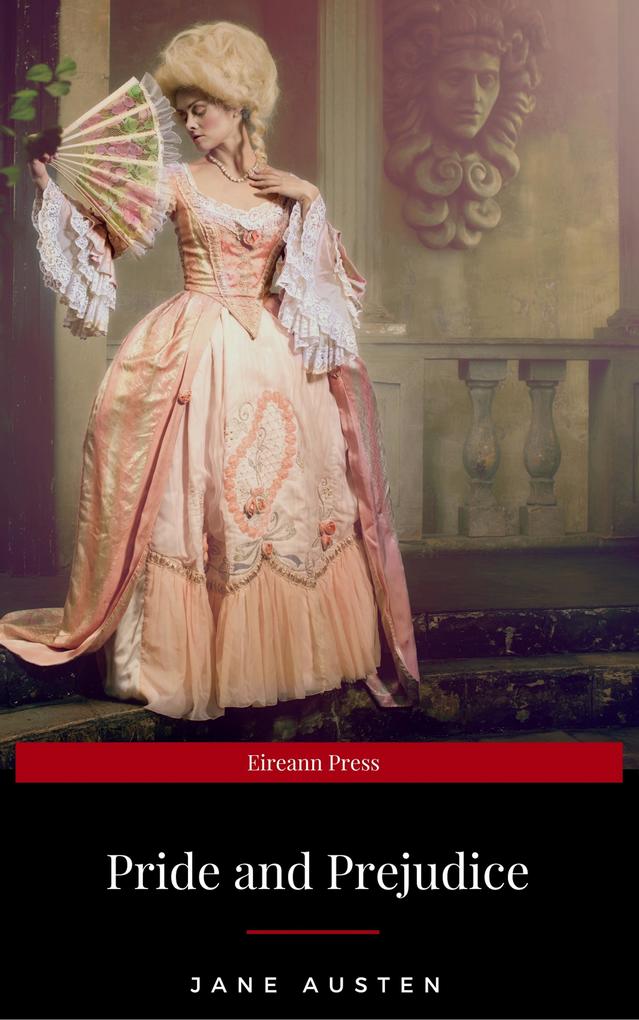
Sofort lieferbar (Download)
Pride and Prejudice is a romance novel by Jane Austen, first published in 1813. The story charts the emotional development of the protagonist, Elizabeth Bennet, who learns the error of making hasty judgments and comes to appreciate the difference between the superficial and the essential. The comedy of the writing lies in the depiction of manners, education, marriage, and money during the British Regency period.
Mr. Bennet of the Longbourn estate has five daughters, but his property is entailed, meaning that none of the girls can inherit it. His wife has no fortune, so it is imperative that at least one of the girls marry well in order to support the others on his death. Jane Austen's opening line, "It is a truth universally acknowledged that a single man in possession of a good fortune must be in want of a wife" is a sentence filled with irony and playfulness. The novel revolves around the importance of marrying for love, not simply for money, despite the social pressures to make a good (i. e. wealthy) match.
Mr. Bennet of the Longbourn estate has five daughters, but his property is entailed, meaning that none of the girls can inherit it. His wife has no fortune, so it is imperative that at least one of the girls marry well in order to support the others on his death. Jane Austen's opening line, "It is a truth universally acknowledged that a single man in possession of a good fortune must be in want of a wife" is a sentence filled with irony and playfulness. The novel revolves around the importance of marrying for love, not simply for money, despite the social pressures to make a good (i. e. wealthy) match.
Produktdetails
Erscheinungsdatum
18. Januar 2018
Sprache
englisch
Seitenanzahl
15
Dateigröße
1,13 MB
Autor/Autorin
Jane Austen
Verlag/Hersteller
Kopierschutz
mit Wasserzeichen versehen
Family Sharing
Ja
Produktart
EBOOK
Dateiformat
EPUB
ISBN
9782378981204
Entdecken Sie mehr
Bewertungen
0 Bewertungen
Es wurden noch keine Bewertungen abgegeben. Schreiben Sie die erste Bewertung zu "Pride and Prejudice (Eireann Press)" und helfen Sie damit anderen bei der Kaufentscheidung.









